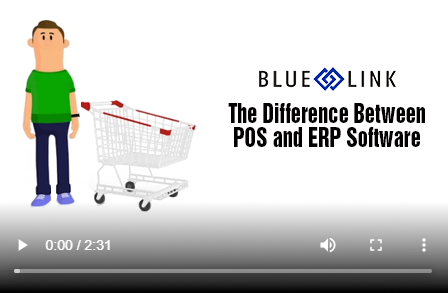Point of sale (POS) refers to the physical location at which goods or services are purchased and transaction data is captured through electronic cash registers or other electronic devices such as magnetic card readers, optical and barcode scanners or some combination of these.
As the definition implies, POS does not refer to the order entry process, but rather it refers to a physical location where customers can purchase goods and services. Traditionally POS transactions occur in retail brick and mortar stores, as well as service businesses such as restaurants, movie theatres, hair salons, mechanic shops etc.
A POS terminal is a physical electronic device used to capture payment cardholder data at the source of the transaction. A POS terminal will generally be able to read the information off of a customer’s credit or debit card and then process the payment, printing a receipt.
POS vs. ERP
The distinction between POS software and other business management systems such as ERP is important, as although both may offer similar features, they are geared towards different markets. POS software is best suited for Business-To-Consumer (B2C) companies that manage walk-in traffic from customers who visit their location. They operate physical retail brick and mortar stores and primarily sell goods direct to the consumer. However, POS functionality is also a good fit for Business-To-Business (B2B) companies, such as wholesale distribution companies, if they also operate as a cash and carry location, have a showroom for walk-in customers or operate physical retail brick and mortar stores. In this situation, even though you may sell to people who visit your location directly, they are likely reselling the product to the actual consumer (for example contractors who sell material as part of projects, or restaurant owners who buy inventory to sell as their menu options). The big difference is that if your business primarily sells to other businesses, and has limited walk-in sales compared to your other sales channels, you're better off finding an alternative solution to just POS software.
Enterprise Resource Planning (ERP) software refers to an all-in-one business management solution complete with features for inventory management, order entry and processing, accounting, warehouse management, contact management, purchasing, sales and financials, and more. Many ERP systems will also provide optional components that are industry specific – for example, point of sale functionality and eCommerce tools. The idea with ERP software is that its purpose is to replace all existing software packages and manage company data from a single database – including sales from multiple channels such as retail, eCommerce, tradeshows, wholesale and more. ERP with built-in POS functionality allows users to create orders and accept payment on the front end when dealing face-to-face with customers through POS terminals, as well as create orders and process payments on the back-end when receiving orders via email, phone or other methods. Even if as a wholesale business, you serve the occasional walk-in customer, it may not warrant full POS functionality. Instead, employees can enter an order directly into the ERP system and then process payment in the form of a check, on account, through an invoice or via credit card. To figure out what type of system you need, consider what percentage of sales come from walk-in customers and how those customers pay for and receive product.
eCommerce solutions provide customers the option to place orders and submit payment online and through mobile devices but are distinctly different from POS software. With eCommerce solutions, the customer is not face-to-face with the company and information is passed electronically. When speaking with potential software vendors it is important to understand the different terminology to ensure you're referring to the same functionality and system requirements.
Frequently, businesses looking for software to manage orders, decide to look at POS software, but as we discussed above this is not always the best decision. If you’re managing inventory in a warehouse, it is important to find a solution that has inventory capabilities, in addition to sales orders and other financial tools. Focus on finding a software vendor that caters to your specific industry – such as wholesale and distribution – as opposed to starting the search based on functionality requirements. A knowledgeable vendor will be able to provide insight into what specific features are required, and will get you thinking about how to manage all aspects of your business.











